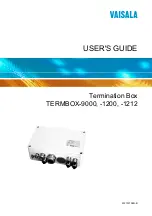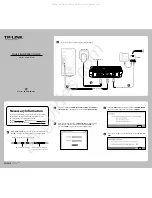
Chapter 16
LLDP
LLDP (Link Layer Discovery Protocol) is a Layer 2 protocol that is used for network devices to
advertise their own device information periodically to neighbors on the same IEEE 802 local
area network. The advertised information, including details such as device identification,
capabilities and configuration settings, is represented in TLV (Type/Length/Value) format
according to the IEEE 802.1ab standard, and these TLVs are encapsulated in LLDPDU (Link
Layer Discovery Protocol Data Unit). The LLDPDU distributed via LLDP is stored by its
recipients in a standard MIB (Management Information Base), making it possible for the
information to be accessed by a Network Management System (NMS) using a management
protocol such as the Simple Network Management Protocol (SNMP).
An IETF Standard MIB, as well as a number of vendor specific MIBs, have been created to
describe a network's physical topology and associated systems within that topology. However,
there is no standard protocol for populating these MIBs or communicating this information
among stations on the IEEE 802 LAN. LLDP protocol specifies a set. The device running LLDP
can automatically discover and learn about the neighbors, allowing for interoperability between
the network devices of different vendors. This protocol allows two systems running different
network layer protocols to learn about each other.
The LLDP information can be used by SNMP applications to simplify troubleshooting, enhance
network management, and maintain an accurate network topology.
LLDPDU Format
Each LLDPDU includes an ordered sequence of three mandatory TLVs followed by one or more
optional TLVs plus an End of LLDPDU TLV, as shown in the figure below. Chassis ID TLV, Port ID
TLV, TTL TLV and End TLV are the four mandatory TLVs for a LLDPDU. Optional TLVs provide
various details about the LLDP agent advertising them and they are selected by network
management.
The maximum length of the LLDPDU shall be the maximum information field length allowed by
the particular transmission rate and protocol. In IEEE 802.3 MACs, for example, the maximum
LLDPDU length is the maximum data field length for the basic, untagged MAC frame (1500
octets).
LLDP Working Mechanism
1)
LLDP Admin Status
The transmission and the reception of LLDPDUs can be separately enabled for every port,
making it possible to configure an implementation to restrict the port either to transmit
only or receive only, or to allow the port to both transmit and receive LLDPDUs. Four LLDP
admin statuses are supported by each port.
386
















































